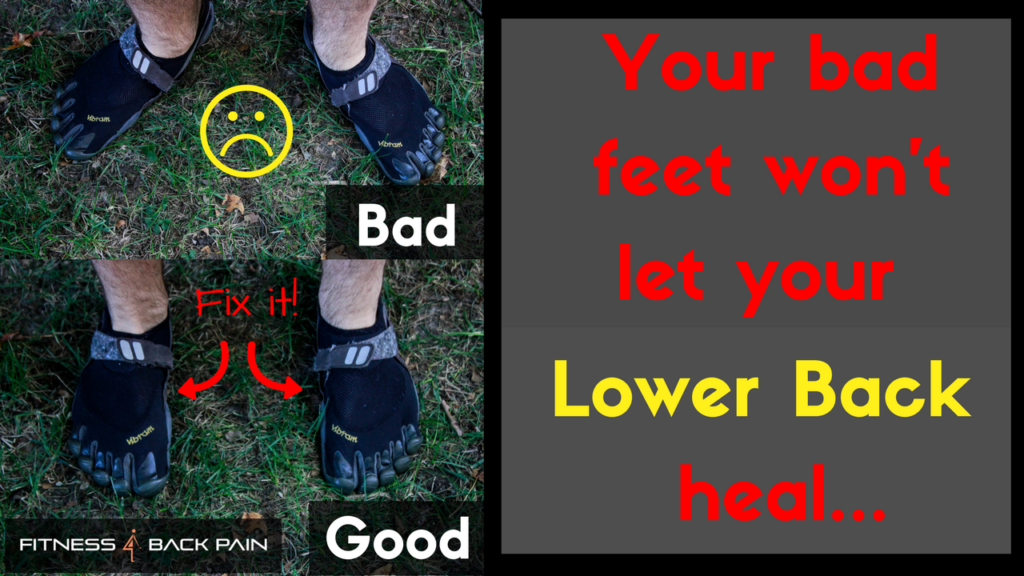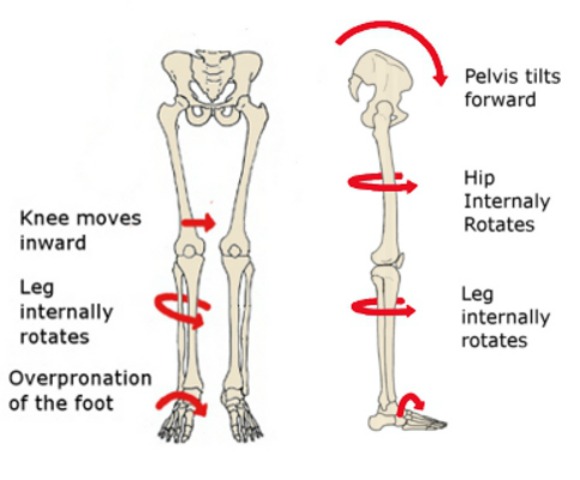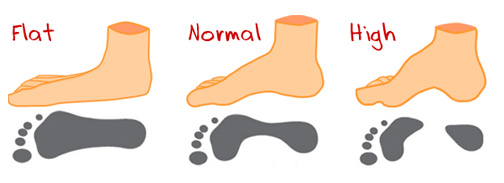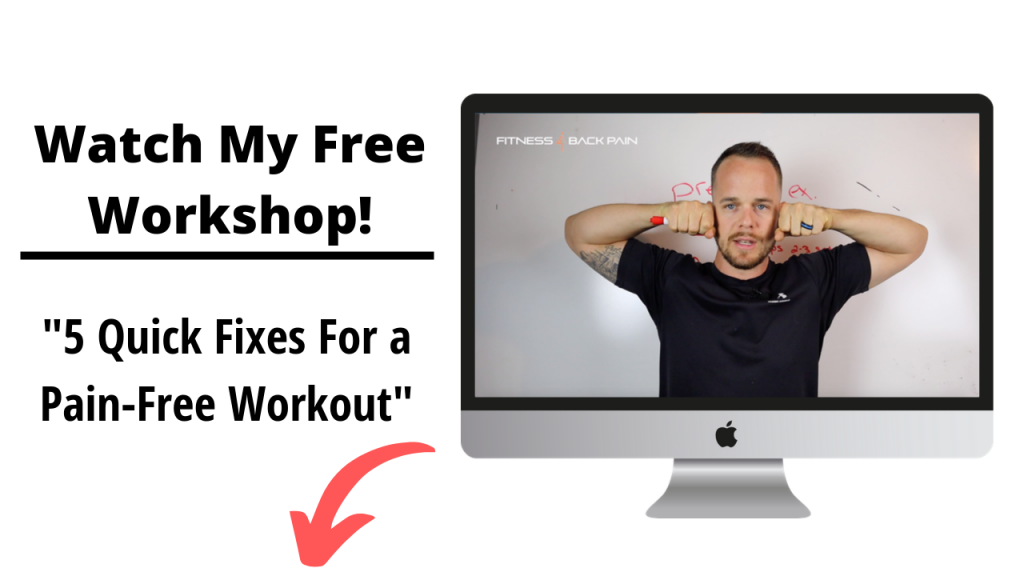
When it comes to our feet and lower back pain, a lot of people tend to overlook the importance of the foot’s alignment for the rest of the body. Most people don’t actively engage their body with what they are doing. They don’t think how these shoes or that posture will affect their performance. We base everything off of pain. If it hurts then it must be bad. If it feels good then it must be good. Today, we are going to go on a crash course to caring for your feet, using them as the tool that they were designed for and how all this impacts your lower back.
I give a funky toe and foot stretch at the end of today’s video…be sure to catch it!
I saved the feet for last because everything (In my opinion) starts at your feet when it comes to posture and how you move and use our body. While everything else is super important that we have covered, you need tp spend extra time correcting the way you use your feet in order to continue to see results everywhere else. Too many people have forgotten how to use their feet especially when it comes to addressing lower back pain. We stuff them in the most squishy shoes ( I have a pretty popular article on how shoes impact your lower back. You can check it out here) we can find and think that’s what’s best for us. It’s the exact opposite. Keep in mind that simply correcting your feet won’t make your lower back pain disappear. This is simply another peace of the puzzle to address along your journey of improving the way you use your body and its tissues.
If you are just tuning in we have been covering the first major steps to organize the most popular issues we deal with that can contribute to lower back pain. Each issue we cover comes with an actionable plan to correct it so be sure to pick the issue you are having and take action. Here is what we have covered so far!
PART I: Fundamentals of Movement
PART II: Breathing, Bracing, and Finding Neutral Pelvis
PART II: Forward Head Posture (Text Neck) and Unstable Shoulders
Bad Feet and Lower Back Pain

The rest of your body stands and depends on the position of the only two points of contact that are on the floor.
Your feet.
What this means is that if you’re not conscious of what your feet are doing and whether or not you are using them correctly, you could be throwing your whole system off. Keep in mind, the human body is extremely resilient and can withstand a lot of dysfunctions but after a while, your tissues will begin to respond to this negative stress.
Think of it this way.
Let’s say your arches collapse, that is going to directly affect the angle in which the knee operates, which will lead to instability at the knee joint as well as the hip. The hip will do its best to fire the muscles needed to make up for those fallen arches but the muscles that are being activated are supposed to be used to support and bring stability to the spine. Now that your spine is vulnerable, the discs and other tissues will have to absorb this negative stress. After a while pain is present as well as a laundry bag of trigger points up and down your legs, into your lower back and even traveling up and into your neck.
All because of your feet.
I know what your thinking. Well, I have had flat feet my whole life and my doctor said these custom orthotics are my only option.
Wrong.
I have had flat feet my whole life and for the past couple of years, I have been actively pursuing a healthier, stable ankle and foot. I didn’t magically create perfect arches but I have developed more awareness and strength in my feet. This awareness keeps me pursuing an optimized way of walking which in return is strengthening the muscles that have to do with my arch. It is very much a process and something that takes time but if my duck feet can see improvement and support my body so can yours. I was the kid who had custom orthotics in all of my shoes and they made the pain worse the longer I wore them.

Okay, okay I get it. So, how do I fix my dysfunctional feet?
I created a video for you below that goes over what I do when it comes to smashing the tissue in my feet, stretching the tissues and learning how to activate them to bring more support. It’s key that you follow each step in order. The most important step is 3rd one!!
I share my favorite foot massage at the end so make sure you watch all the way through!
If you are working through the tennis ball exercise and you get to the point where more direct pressure would help, below is a video talking about the specific points on the foot that I will use a Lacrosse ball on. Make sure you go slow and don’t rush results.
How to apply these new tools to your daily life
If you are confident that your feet need some serious attention then this is what I want you to do.
Perform this group of exercises 1-2 times a day
1) Tennis Ball Smash: 2 minutes on each foot
(Optional) Lacross ball work after tennis ball for 1 minute each foot.
2) Toe Extension: 2-3 sets of 15 sit backs with a 1-minute hold at the end of each 15 reps.
3) Spend 2 hours total a day with no shoes on (work up to that and beyond). Remove your shoes at work (if you can) and practice correcting your foot stance 20x a day.
4) 2 sets of one-minute finger toe spreads after all soft tissue work and stretching is done.
BONUS VIDEO: Addressing flat feet and back pain!
I shot a video that covers three practical steps you can take to addressing the tissues in the feet as well as building strength back in your arch. Check it out below!
Boom. There you have it. All you need now is time and consistent attention to the program above.
Try it out and let me know what you think.
What do you like better, the tennis ball or lacrosse ball?
Let me know in the comments below.
Addicted to your foot health,
William
p.s I am on a mission to help as many low back pain suffers like you and me as I can. Please help me do that by sharing this article with people you know! It helps me help more people. Thanks!


Great site. BTW, in the 1970s, I read a book called “The Body Has Its Reasons” by Therese Bertherat (eg: https://www.bookdepository.com/The-Body-Has-its-Reasons-Therese-Bertherat-Carol-Bernstein/9780892812981). Similar ideas. Has since developed into: http://antigymnastique.com/en/
I love your videos thank you!! I’ve been spraining my lumbar on and off for like ten years and after back to back pregnancies my flat feet need so much help. My toes keep cramping when I try these exercises as I have a huge bunion on my left big toe. Any help there?
Hey Mallory,
Have you pinned down the cause of the bunions?